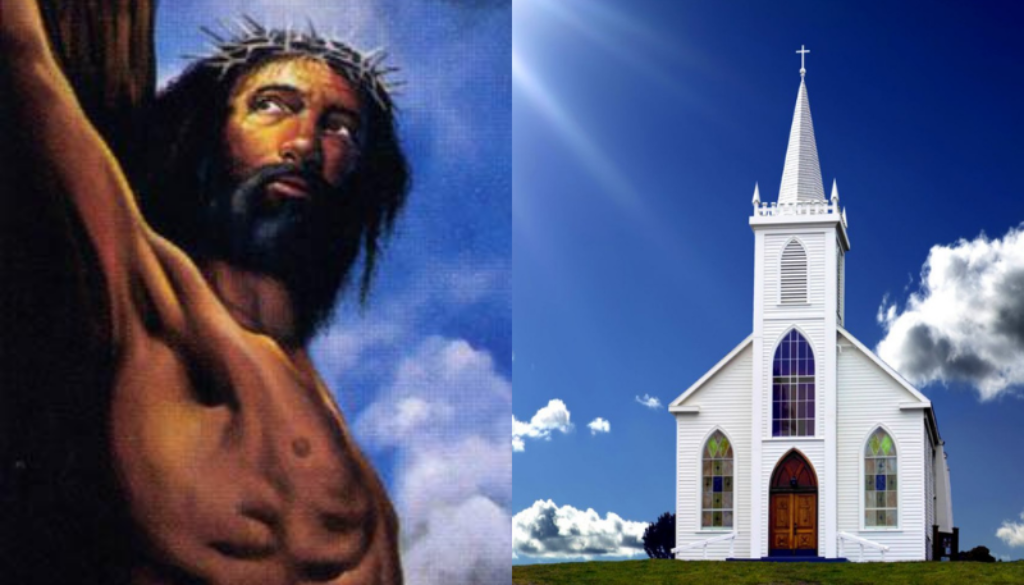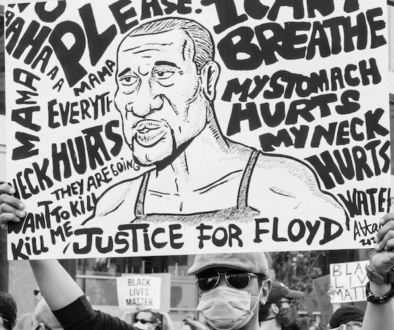Jesus of the Community | Churches in the Community

April 2022
The Bible is a most interesting book. Pick an issue, love, peace, social justice, faith, you will certainly find a scripture reading that may advance your perspective. What is interesting is that two people can read the same scripture and come away with a different perspective.
I like to ask the question “What does this say, GODISNOWHERE.” Some people say GOD IS NOW HERE, others respond with GOD IS NOWHERE.
I would like to spend a few moments on the Gospel of Matthew, and my perspective on the issue of community.
Jesus of The Community
Matthew wrote of the many communities Jesus visited and lived; Galilee, a region located in northern Israel and southern Lebanon, Judea, a mountainous region, 19 miles southwest of Jerusalem, Capernaum, an ancient city on the northwestern shore of the Sea of Galilee, Jericho and Jerusalem, which today, are Palestinian cities in the West Bank.
Jesus proclaimed the gospel everywhere he went, both in public settings and within the doors of the synagogues. He cured many people of diseases, leprosy, blindness, paralysis, lunacy. We are told that he provided nourishment for the hungry. While Jesus was a Jew, his teachings were not reserved for the Israelites, but for the gentile community, as well. Surprising to the Pharisees, he even spent time with tax collectors and sinners.
I would say that he was a man “of” many communities, participating in every way to provide spiritual and physical healing. Scholars believe Jesus started preaching around 27 C.E. and died around 35 C.E. It seems he accomplished much in his public ministry.
Churches in The Community
I have participated in the activities of a certain Black community in Baltimore, which will remain nameless. But it is much like other urban communities in need of healing. This community is characterized by the following:
- Approximate populations 30,000, 96% are Black
- Only 30% have an education beyond high school
- There are vacant and boarded houses on nearly every street
- The rate of children living in poverty is 50 times higher than the Baltimore City region
- A Medically Underserved Area, as designated by the U.S. Department of Health and Human Services
- The highest HIV transmission rate in the country as determined by the Centers for Disease Control and Prevention
- Leading causes of death, HIV, homicide and drug overdose
- Approximately 56% of the age eligible workforce is unemployed
I think you can see that this is a community in need.
I reached out (letters and followup phone calls) to 16 of the many churches within the community. Basically, a hello, like to talk about the community, maybe a meeting with the other pastors, what your church does in the community, etc. One pastor actually returned my call. Anyway, that was the end of that project. I know that there are many other churches throughout the community. I am sure they number more than 30. But for this writing, I’ll refer to them as the “12 churches.”
I am going to go out on a limb. But, I think it is a very strong limb, and it will support me. “When it comes to the Black community, the 12 churches do little to nothing of substance.” I am not referring to the members of the 12 churches which go to the church every Sunday, and are spiritually fulfilled. I am sure the 12 churches provide many services to the members.“Keep tithing, the church needs a new roof and the pastor will send someone to visit you when you are in the hospital.” But one only needs to tour the community and know the spirit and services stop at the doors of the 12 churches. Other than the 12 church memberships, I would wager that the population of 30,000 residents knows nothing of the pastors that shepherd these churches. Though, if one walked by any of the 12, one would see a nice billboard with the pastor’s name, and maybe his or her portrait.
It is the pastor’s job to provide for the members of ones’ church congregation. But if services do not extend to the entire community, I do not think the 12 pastors are fully embracing the gospel as written by Matthew. One only needs to see the boarded houses, the homeless people, the drug dealers and users openly transacting business, to know that community issues are not being addressed. Preaching about these issues as part of a Sunday sermon falls far short of active participation in the community.
It is my opinion that to be “of” the Black community one has to go into the community and be known to the community. If your faith tells you, and you truly believe that Jesus traveled to the many cities, healed many people, preached to many people and provided nourishment to many people, why can’t the 12 churches find unity to do the same in a single community? As a Jew, Jesus welcomed gentiles. But it appears to me that churches, Catholic, Protestant, Baptist, etc. can’t see beyond their doctrines in order to develop a unifying agenda for the Black community.
I recently read an article in the Catholic Review related to community outreach. Due to the COVID pandemic church services were not being held as in the past. So, the church in this particular community developed a committee which was tasked with visiting fellow parishioners, just to ensure all was well. This was a nice thing to do. But I was left with “why only visit members of the church,” “why not contact the Protestant, Baptist, A.M.E. Lutheran churches and share the news so that they could do the same.” For me, the article was one of being “in” the community, rather than being “of” the community.
Let’s go back to the community of the 12 churches. When Jesus sat at the table with the tax collectors and sinners, the Pharisees asked why? His response, “Those who are well do not need a physician, but the sick do.” With the many homicides and drug overdoses in the community, one has to know that there are people with guns and people that sell drugs. Why would the 12 churches have a plan of outreach for these members of the community? One might suggest that the world is a different place than in the days of Jesus, and it would be dangerous to approach such people. Maybe the pastors of the 12 churches can explain why Jesus could sit with tax collectors and sinners, but the churches have no outreach for sinners of this Black community. I understand the brutalities associated with urban neighborhoods throughout this country. Baltimore City consistently averages more than 300 homicides annually. But the brutality of nailing Jesus to a cross for public display was not the act of tax collectors and sinners, but the act of the Roman government. And, the Pharisees were complicit in that act.
Concluding Thoughts
One might consider whether or not Jesus was successful in his mission. As mentioned earlier, he preached and healed around 27 C.E. We are now in 2022. That is a lot of years to “supposedly” learn and embrace his philosophy of life. Was he successful? I guess it depends on who you are. To the 12 churches, their pastors, and their members who are “in” the community, they might say GOD IS NOW HERE. To those suffering from drug addiction, HIV infection and homelessness, they might say GOD IS NOWHERE. Maybe the 12 churches could develop a community philosophy of GOD IS EVERYWHERE.
Being Jesus-like and living the gospel is outreach to the entire community; not just to the segment of folk that adheres to a given religious doctrine. History tells us that doctrines tend to be created out of disagreements. Martin Luther certainly had issues with the Catholic church. But, where have those differing doctrines, and associated differing Christian denominations left the Black community? In America, the Black community has always been and continues to be the poorest of the poor, sickest of the sick and every other worse that America has to offer.
We, as Black people need the 12 churches to create a Unity Doctrine for the Black community, a doctrine that promotes being “of” the community rather than a continuation of the religious doctrines that keeps their church “in” our community.
There are things I do not understand about the many duties and responsibilities of church pastors. Maybe I am wrong in my perspective and just simply naive but, I can certainly envision 12 pastors at the table creating a mission of healing and prosperity for the Black community.
Peace and Blessings


